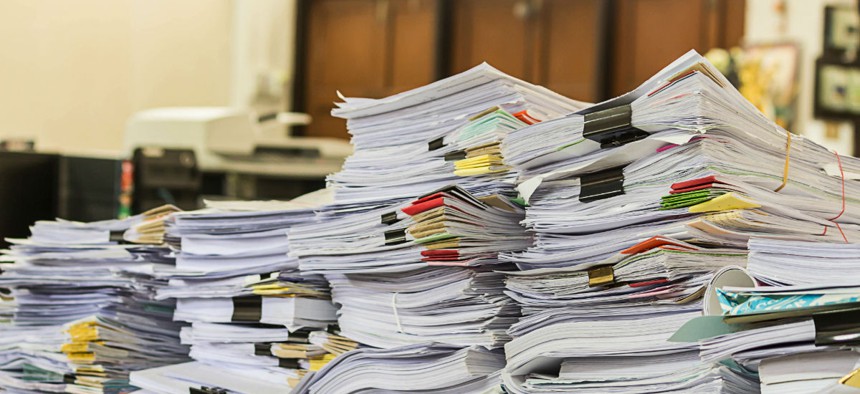Scientists Have Invented Paper You Can Print With Light, Erase With Heat and Reuse 80 Times

Piyapong Wongkam/Shutterstock.com
If left alone, the paper reverts to its original state in five days.
Nearly 1 percent of carbon emissions annually can be attributed to paper production, even though we recycle much of the paper we produce.
Yadong Yin has a solution. He and his colleagues at the University of California at Riverside have invented a type of paper that can be printed on using just light, erased by heating and reused up to 80 times.
Yin created nanoparticles, which are 1 million times smaller than the thickness of human hair, with the dye Prussian blue, or its chemical analogues, and titanium oxide, which is commonly used in white wall paint. This mixture is then applied to normal paper.

When the coating is exposed to ultraviolet light, electrons from titanium oxide move to the dye in the nanoparticle. This addition of electrons makes the blue dye turn white. Focusing the ultraviolet light into shapes, you can print white words on a blue background—or blue words on a white background, which are easier to read.
If left alone, the paper reverts to its original state in five days. That process can be accelerated by heating the paper to 120 °C (250 °F) for 10 minutes.
Yin’s paper is not the only ink-free paper that can be printed by light, but its use of cheap and easily available chemicals makes it more likely to become a commercial product. Of course, it will only take off if the printer used for the paper is cheap too. That’s what Yin’s team is working on next.


